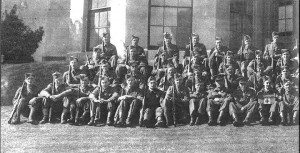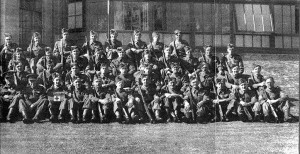Helston Home Guard
On 14th May, 1940, the Government broadcast a message asking for volunteers for the LDV (Local Defence Volunteers) and on 23rd August 1940, Winston Churchill changed the name of the LDV to the Home Guard.
The Home Guard was formed when there was a real risk of invasion. This was particularly important in the County of Cornwall with its many exposed beaches and proximity to the occupied Brest Peninsula.
Most men who could fight were already in the forces, those that were left were either too young, too old, or in reserved occupations (those jobs vital to the war effort). The men who volunteered to join the Home Guard at this time were expected to fight an invasion of crack German troops with nothing more than a collection of old shotguns and pieces of gas pipe with bayonets welded on the end!
The government was expecting 150,000 men to volunteer for the Home Guard. Within the first month, 750,000 men had volunteered, and by the end of June, 1940, the total number of volunteers was over one million. The number of men in the Home Guard did not fall below one million until they were stood down in December 1944.
It was formed with the intention of delaying an enemy invasion force for as long as possible and to give the Government and the regular army time to form a front line from which the enemy invasion could be repelled. When they were first formed, the Home Guard were expected to fight highly trained, well armed, German troops using nothing but shotguns, air rifles, old hunting rifles, museum pieces, bayonets, knives and pieces of gaspipe with knives or bayonets welded on the end.
Here is a photograph (divided in to two halves due to size) of the HELSTON HOME GUARD.
It was taken sometime during WWII at LISMORE in HELSTON and depicts the members at that particular time. Unfortunately, I don`t have the date it was taken and some of the names are missing. Perhaps you can tell me more about the people and the unit itself.

